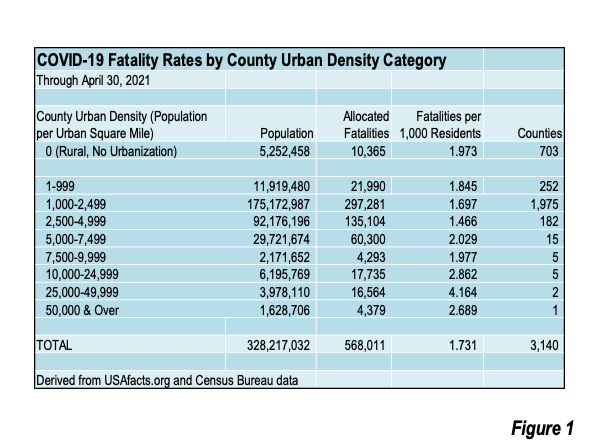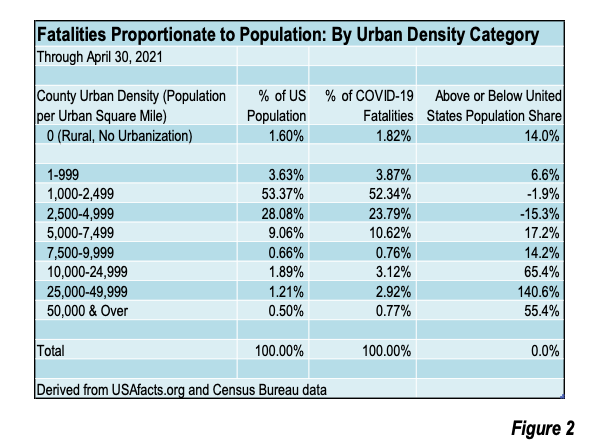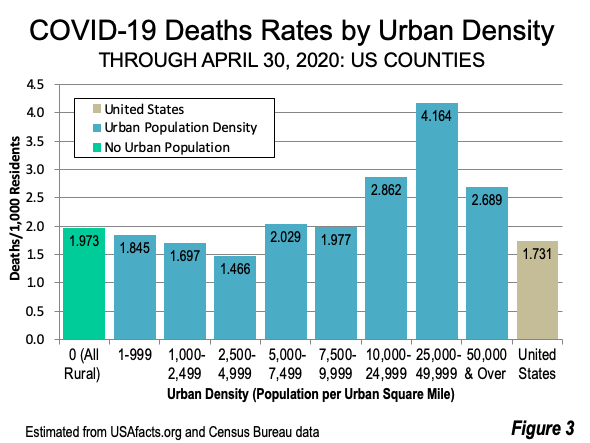The US Census Bureau announced national, state and District of Columbia 2020 Census population totals yesterday. The big story in the media was the changes in Congressional apportionment, which are detailed later in this article.
Note: This article summarizes the first results of the 2020 census (national, states and DC). A table at the end of the article provides 2020 census figures, change from 2010, percentage change and comparison to expected, along with rankings in each category.
The big stories, from a demographic rather than a political perspective were (in my judgment) in California, New York and New Jersey, Texas and Florida, as well as the Mountain West.
California, Texas and Florida
First, as predicted, the California malaise continued. For the second Census in a row, California placed second after Texas in total population gain. Texas gained 4.0 million residents, while California gained 2.3 million. The Texas lead of 1.7 million nearly doubled compared to its 900,000 lead between 2000 to 2010. But there’s more. Florida also led California over the last census period by 450,000. California had added the largest number of residents in every census from 1930 through 2010.
New York and New Jersey
But the big surprise is New York, in which the Census Bureau was estimating an increase of about 75,000 residents between 2010 and 2019. The newly reported census figure for New York was up 823,000 from 2010, This more than doubles New York’s 2000-2010 gain.
There’s good reason to believe that the unexpected New York increase will be contained in the New York metropolitan area. New Jersey, much of which is included in the New York metropolitan area, also had a 2020 census reported population much higher than expected. Through 2019, the Census Bureau estimated that New Jersey’s population had risen just over 100,000 from 2010. The new 2020 estimate of 9.82 million is nearly 500,000 greater than in 2010.
It will be interesting to see the distribution of the higher population when figures are available
Utah, Idaho and the Top Five Proportionate Gainers
Meanwhile, the stars in proportionate population growth were in the Mountain West. Utah led with an 18.2% increase. Idaho was second at 17.3%. Despite its huge population, Texas slipped into the number 3 position, at 15.9%. North Dakota, in the Great Plains, added 15.0%, with its more than 100,000 increase being more the state gained from 1920 to 2010. Mountain West Nevada placed 5th with a 15.0% increase.
States Losing Population
The largest loss, at 3.2% was in West Virginia. Mississippi (minus 0.2%) and Illinois (minus 0.1%) also lost population
Changes in Apportionment
Based on the new census counts six states will gain seats in Congress. Texas will gain two seats, while Colorado, Florida, Montana, North Carolina and Oregon will each gain one. Seven states will lose one seat apiece, including California, for the first time since becoming a state in 1850. Illinois, Michigan, New York (despite the unexpected gain), Ohio, Pennsylvania and West Virginia will also lose seats.
View/download the Table of 2020 Census First Results (PDF)
Wendell Cox is principal of Demographia, an international public policy firm located in the St. Louis metropolitan area. He is a founding senior fellow at the Urban Reform Institute, Houston, a Senior Fellow with the Frontier Centre for Public Policy in Winnipeg and a member of the Advisory Board of the Center for Demographics and Policy at Chapman University in Orange, California. He has served as a visiting professor at the Conservatoire National des Arts et Metiers in Paris. His principal interests are economics, poverty alleviation, demographics, urban policy and transport. He is co-author of the annual Demographia International Housing Affordability Survey and author of Demographia World Urban Areas.
Mayor Tom Bradley appointed him to three terms on the Los Angeles County Transportation Commission (1977-1985) and Speaker of the House Newt Gingrich appointed him to the Amtrak Reform Council, to complete the unexpired term of New Jersey Governor Christine Todd Whitman (1999-2002). He is author of War on the Dream: How Anti-Sprawl Policy Threatens the Quality of Life and Toward More Prosperous Cities: A Framing Essay on Urban Areas, Transport, Planning and the Dimensions of Sustainability.















